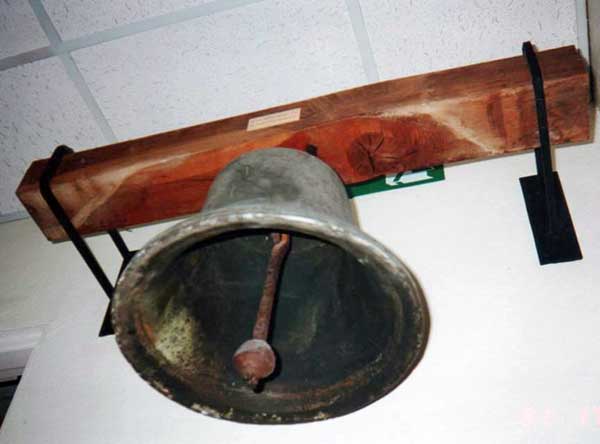.

It was in 1842 that Launceston Gaol disappeared from the scene following the removal from the town of the Cornwall Assizes to Bodmin. From this Gaol had walked the many poor wretches, among them boys of tender years, who were hanged in the grounds of the Norman Castle, after which TOLLED THE BELL OF DOOM.
Considerable interest has been aroused in this bell with its gruesome history. When the hangings were transferred to Bodmin, the jail destroyed, the bell was removed by Mr William Burt, builder and contractor, of St Stephens ‘for safe keeping’. When Burt was awarded the contract to erect the school on King William Street (today’s New Road, or St Thomas Road), he produced the bell and hung it on the front of the school. (Charles Causley’s school). When the school was closed it was removed to the new school, St Catherines, where it still hangs and is used each day.
The best theory so far put forward as to the origin of the bell is that it first belonged to the ancient chapel, built at the same time as the Castle, and dedicated to the Blessed Virgin Mary. Sir Alfred Robbins, in his ‘Launceston’, the story of his native town, pinpointed the Gaol as not far from the western gate of the Castle Green, and very close to the existing Lodge, now the English Heritage Castle shop and entrance. “Its position,” he wrote, “may best be judged from the well, which was in the female portion of the prison, and which was reopened in 1883 by Sir Hardinge Giffard, Constable of the Castle.
The widow of Christopher Mules, the elder, was in possession of the old buildings to the end, and, as the castle and its belongings are extra-parochial, the difficulty which had always been found in securing the payment of rates from this property extended to the process of evicting the last occupant”.
The last execution to take place at Launceston was in 1821. Two men, named Thompson, and Barnicott, were hanged in the Castle Green for the murder of a farmer near Probus. The scaffold was erected on a slight mound in the centre of the Green, known as Gallows Hill. The previous execution to this was in 1818, when William Rowe, of Stoke Climsland, suffered the death penalty for sheep stealing. It is said, his father waited in the West Gate Inn for his son’s body, which he afterwards took away in an open cart, followed by a crowd of ghoulish onlookers.
The above taken from an article by Douglas Allen
Visits: 179
